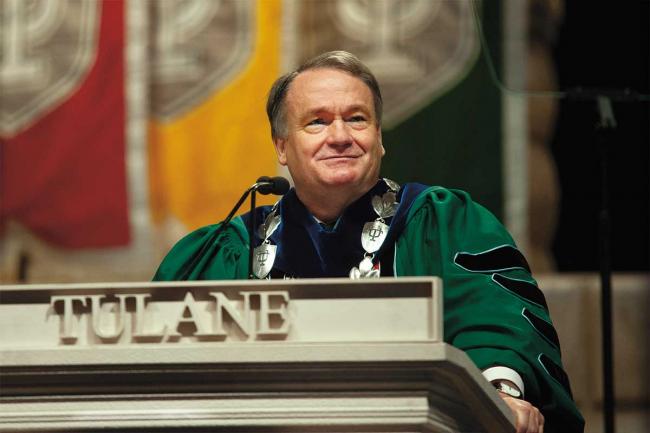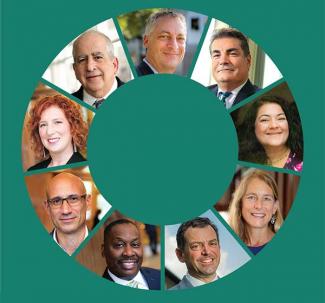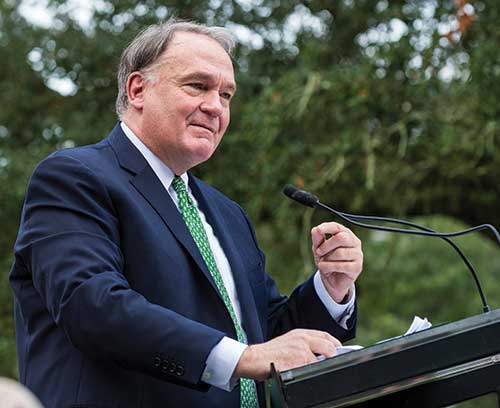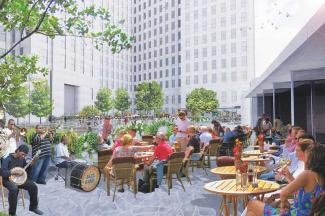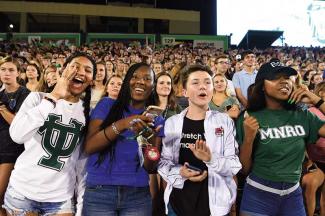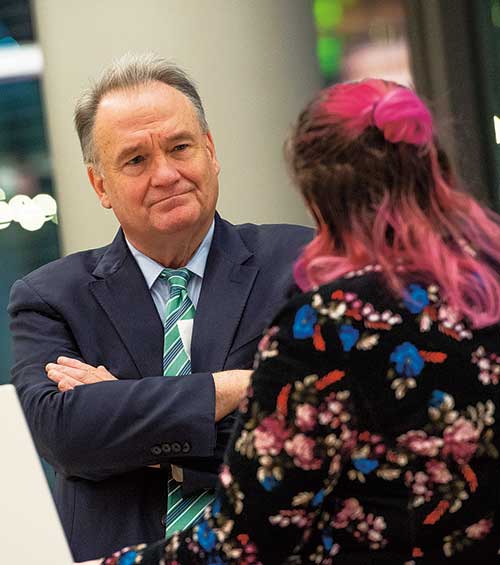(Above photo by Paula Burch-Celentano)
Mike Fitts likes to bring people together. Much of the success Tulane has experienced, the milestones it has reached, the records it has shattered, as well as the challenges it has overcome since Fitts’ arrival on campus in 2014, can be traced back to this tendency.
“We’re all in this together” — the mantra of the pandemic era — could also be the theme of Fitts’ presidency. Throughout his leadership at Tulane, Fitts has brought people, disciplines and ideas together to confront natural disasters, financial crises, racial injustices and more. His overarching goal is to move the university ever forward as a force for good.
A prime example is Tulane’s response to COVID-19. The university’s interdisciplinary, collaborative and coordinated approach to problem solving is perfectly suited to confront such global threats.
As the race for vaccines, better tests, care and treatments began, Fitts turned to university scientists, encouraging partnerships among researchers at the School of Medicine, the National Primate Research Center, the School of Public Health and Tropical Medicine, as well as the School of Science and Engineering. The School of Social Work explored new approaches to the emotional toll of the pandemic while experts in the Schools of Architecture, Business, Law, Liberal Arts, Professional Advancement and Newcomb-Tulane College addressed its impact on schools, businesses and society. Meanwhile, administrators throughout campus enacted a bold return-to-campus plan that included one of the nation’s most extensive surveillance testing, contact tracing and isolation/quarantine programs. As a result, Tulane was able to hold in-person classes throughout the fall of 2020 and spring of 2021, while maintaining a positivity rate substantially lower than the city and state.
“Pick a problem — environmental degradation, racial inequities, failing public schools or public health threats like COVID-19 — the sources of these challenges are multifaceted and often interrelated. So, it follows that the best way to help solve these problems is by having experts from diverse fields working together on their solutions,” Fitts said.
Such collaboration, he added, is also the best way to educate today’s students, whom he calls “the leaders, creators and global citizens who will shape the future.”
“When I was in college, students burrowed down in one major or specialty, such as engineering or English or business, and usually pursued ‘single-focus’ careers throughout their lives,” Fitts said. “Today, a graduate may change careers a dozen times and is more likely to create a startup than work for a single company or institution for 30 or 40 years. So, we need to prepare graduates to be more nimble, adaptive and open to other approaches in everything from solving problems to creating art, music and literature.”
Delivering the best university education “requires a laser focus on creating a truly interdisciplinary learning experience that educates the whole student — intellectually, emotionally and socially,” he said.
But Fitts’ leadership is not composed entirely of interdisciplinarity and strategic vision. His warm and affable personality is also central to his success.
“I think something President Fitts has done really well is demystify the role of the president on college campuses,” said Lela Scully, a junior in the School of Public Health and Tropical Medicine. “He is approachable and accessible to the student body, a friendly face on campus, at games, or even walking down McAlister. He’s connected himself to students when he shows up to smile and shake hands. Because of that, he’s made his role of president feel less like a figurehead, which I think is an excellent evolution.”


